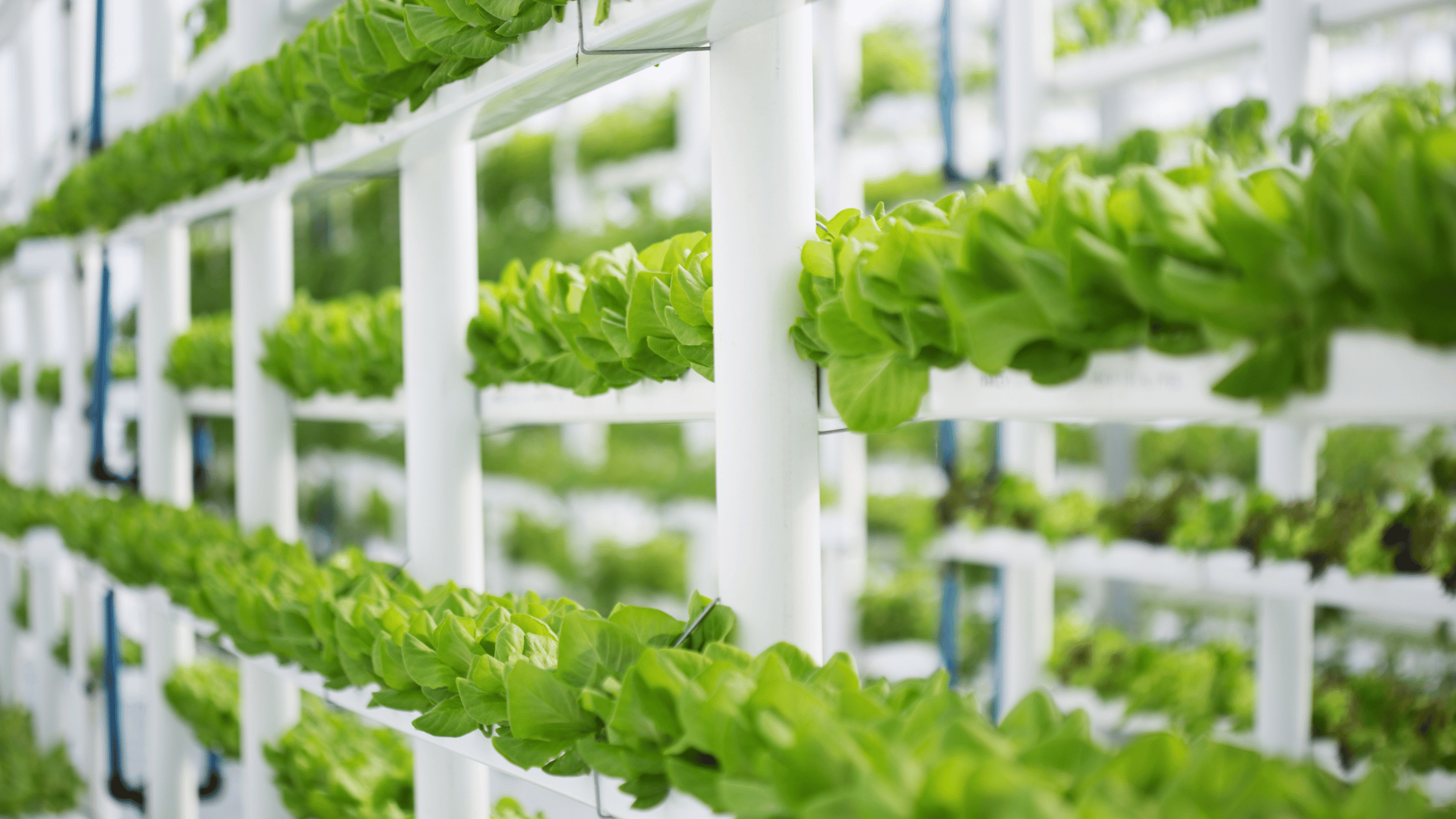Beginner’s Guide to Hydroponics as a Hobby: Simple Steps to Start Growing Indoors
Diving into hydroponics as a hobbyist can open up a world of gardening possibilities that don’t require soil.
This method allows you to grow plants efficiently by using a nutrient-rich water solution, making it an ideal choice for beginners looking to cultivate their own produce or ornamental plants.
With hydroponics, you gain full control over the growing environment, which can lead to faster plant growth and higher yields compared to traditional gardening.
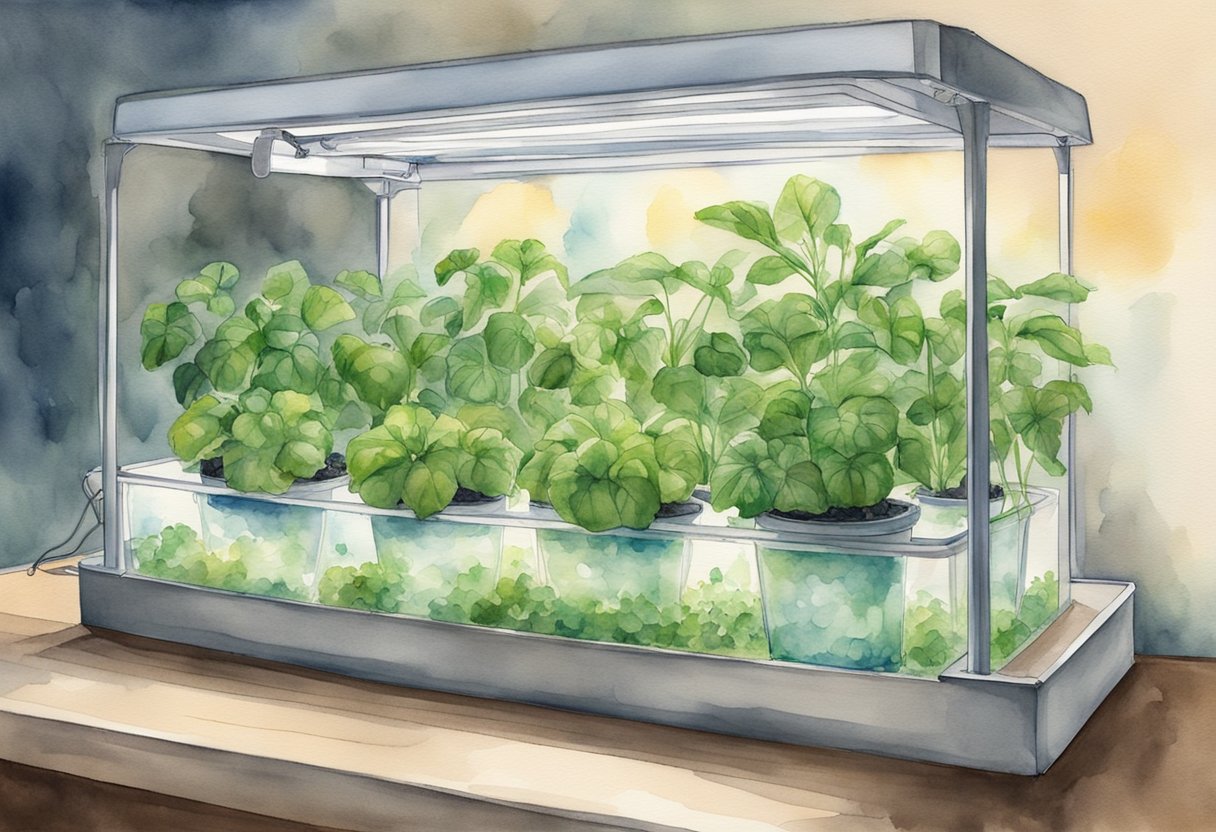
The appeal of hydroponics isn’t just its efficiency; it also offers flexibility for gardeners who want to grow indoors or in small spaces.
You can experiment with different hydroponic systems, each offering unique benefits and suitable for various types of plants.
By choosing the right setup, you can overcome the limitations of seasonal gardening and ensure a steady supply of fresh produce year-round.
For those just starting out, understanding the fundamentals of hydroponics is crucial to success.
Mastering these basics will help you optimize your home hydroponic garden, saving water and space while maximizing your gardening potential.
Key Takeaways
- Hydroponics offers efficient, soil-free plant growth for hobbyists.
- Beginners can experiment with various systems suitable for different plant types.
- Nutrient management and environmental control are key to success.
Understanding Hydroponics
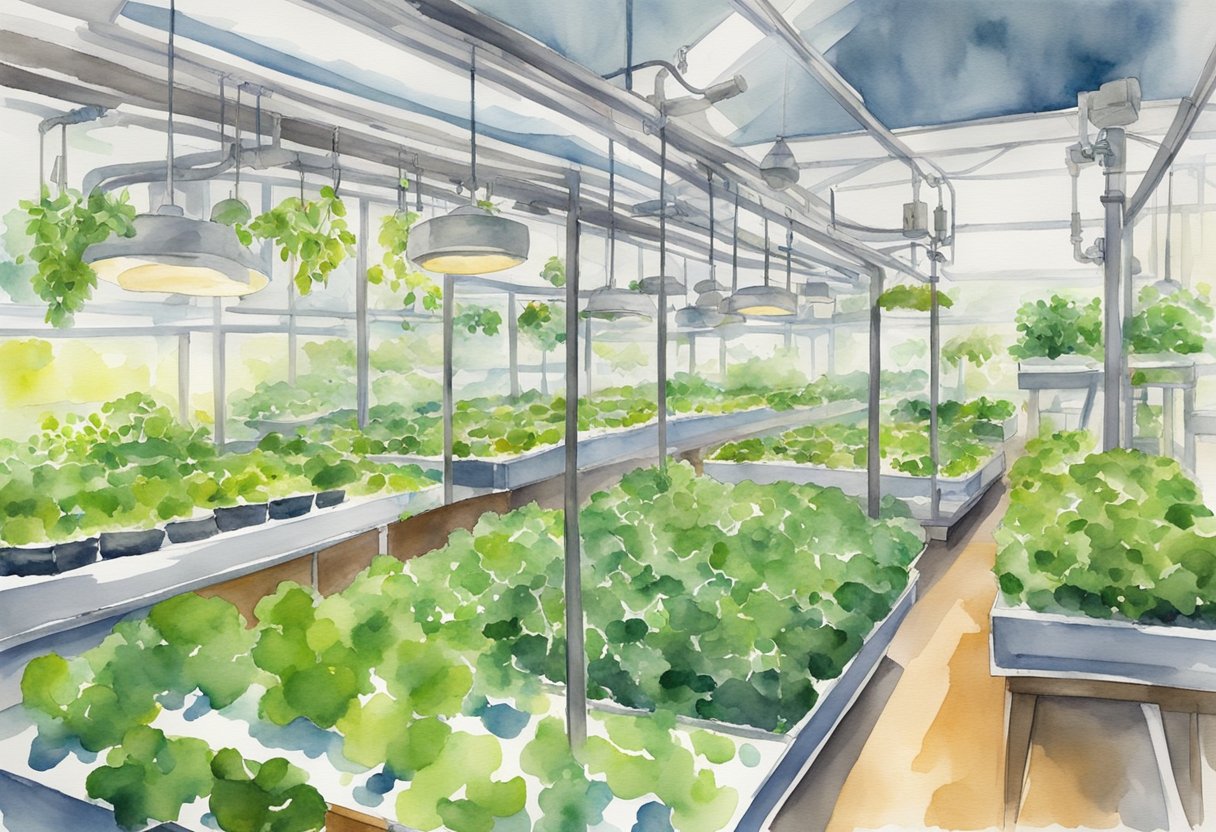
Hydroponics offers a fascinating approach to growing plants without soil, utilizing innovative systems and technologies.
History of Hydroponic Systems
Hydroponics is an ancient method, with roots tracing back to the Hanging Gardens of Babylon and Aztec floating gardens.
The term “hydroponics” was coined in the 1930s by Dr. William Gericke of the University of California, reflecting its growth as a scientific discipline.
The modern revival of hydroponics began in the mid-20th century with advancements in nutrient solutions and technology.
These developments made it more accessible for commercial and personal use.
Today, hydroponic systems are diverse, ranging from simple setups for beginners to advanced configurations used in urban agriculture and space research.
Benefits of Hydroponic Gardening
Hydroponic gardening offers several benefits over traditional soil-based methods.
It provides a controlled environment where you can efficiently manage nutrients and water, resulting in faster plant growth and higher yields.
The soilless environment reduces the risk of soil-borne diseases and pests, enhancing plant health.
This method is also space-efficient, allowing you to grow more plants in smaller areas, making it ideal for urban settings.
Hydroponics uses less water compared to conventional gardening, as water is recirculated within the system, promoting sustainability.
Comparing Hydroponics and Traditional Soil Gardening
When comparing hydroponics to traditional soil gardening, several distinctions are evident.
In a hydroponic system, plants receive nutrients directly from water rather than extracting them from soil, allowing you greater control over the growth environment. This precision can lead to quicker harvests and fewer resource inputs.
While traditional gardening relies on soil moisture and weather conditions, hydroponics provides flexibility in various climates and spaces.
Although setup costs can be higher for hydroponics, the efficiency of water and nutrient use may offset initial expenses.
Whether you’re constrained by space or seeking efficient plant growth, hydroponics presents an engaging alternative to conventional gardening.
Fundamentals of Hydroponics

Hydroponics revolves around growing plants in water without soil. Key factors include maintaining a balanced nutrient solution, ensuring adequate oxygenation, and managing water quality and reservoir conditions.
Core Concepts of Hydroponic Gardening
In hydroponic gardening, plants receive nutrients directly through a nutrient solution, optimizing growth. This method eliminates soil, using alternatives like clay pellets for support.
Nutrient solution is rich in essential minerals, feeding plants effectively.
Water quality is paramount. It must be free from contaminants to prevent plant damage.
Regular monitoring and adjustment of pH levels ensure the solution remains optimal. The reservoir, where the solution is stored, needs regular cleaning to prevent algae and bacteria buildup.
Oxygen is critical. In this soil-less system, plants require oxygen to their root zone for respiration.
You use air pumps or stones to aerate the solution, improving oxygen levels and supporting plant health.
The Role of Water and Nutrients
Water is the lifeline of hydroponic systems. It acts as the medium carrying vital nutrients to plants.
Maintaining high water quality is essential as contaminants can disrupt plant growth. Regular testing is crucial to ensure optimal conditions for nutrient absorption.
Nutrients in hydroponics are diverse and must be balanced to match plant needs.
These include nitrogen, potassium, phosphorus, and various trace elements. Each nutrient plays a distinct role in plant development. Maintaining the right concentration is vital.
The combination of water and nutrients supports healthy plant growth.
Ensure the reservoir is replenished regularly to provide fresh nutrients. Oxygenation further enhances nutrient uptake, making it a key component in maintaining a thriving hydroponic environment.
Different Types of Hydroponic Systems
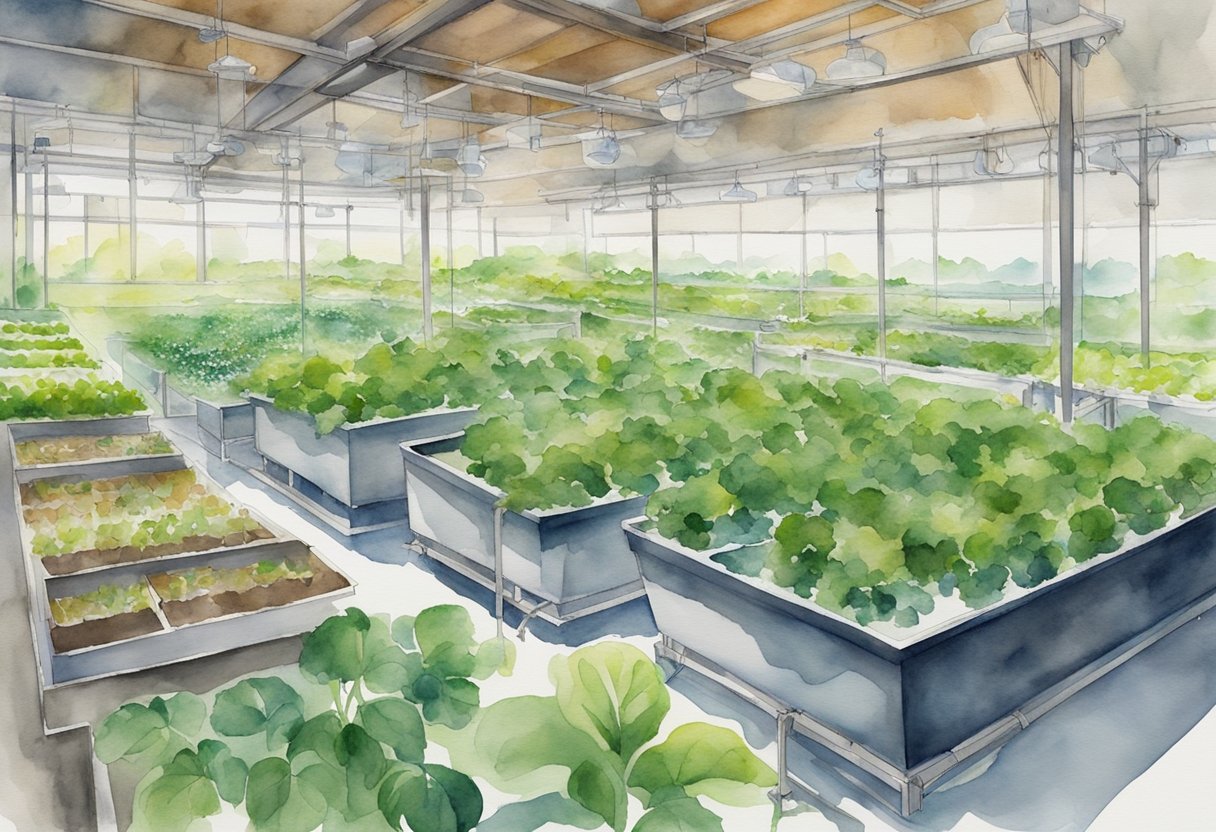
There are several hydroponic systems you can explore, each with unique features and benefits. These systems offer various approaches to providing plants with nutrients, water, and oxygen without soil.
Wick Systems
Wick systems are among the simplest forms of hydroponics, making them ideal for beginners. They operate on a passive system, using a wick to deliver nutrients to the plant roots from a reservoir.
You don’t need electricity or pumps, reducing operational complexity.
This system suits small plants and herbs that don’t require extensive nutrients. With minimal setup and maintenance, wick systems are cost-effective. However, the nutrient delivery might be insufficient for larger plants or those with higher nutrient demands.
Ebb and Flow Systems
Ebb and flow, also known as flood and drain systems, involve flooding the grow tray temporarily with nutrient solution before draining it back into the reservoir. This cycle is on a timer, ensuring roots receive both nutrients and oxygen needed for growth.
You can accommodate bigger plants with this system, as it supports heavier nutrient loads.
Ensure proper cleaning of the system components to avoid clogs due to the buildup of plant debris or salts.
It requires a pump and timers, making it a bit more complex than wick systems.
Drip Systems
Drip systems are popular due to their versatility and efficiency.
A series of tubes and emitters drip a nutrient solution onto the base of each plant.
This system can be simple for small setups or scaled up for commercial use.
Maintenance includes checking emitters for clogs, as blockages can impact water and nutrient delivery.
Drip systems allow you to easily adjust the amount of nutrients each plant receives, optimizing growth conditions for different species in a shared setup.
Deep Water Culture (DWC)
In deep water culture systems, plant roots are suspended in a nutrient-rich solution with air stones or diffusers providing oxygen.
This system allows for rapid plant growth due to the constant availability of nutrients and oxygen.
You’re provided with a straightforward setup, often involving just a bucket, air pump, and net pots.
Keeping the water oxygenated is critical, requiring uninterrupted aeration to prevent root rot.
This system is effective for growing lettuce, herbs, and other fast-growing, water-loving plants.
Nutrient Film Technique (NFT)
Nutrient film technique uses a continuous flow of nutrient solution along a slight incline, moving over plant roots. The thin film of nutrients ensures roots are exposed to air at the same time.
NFT systems suit lightweight crops like lettuce and herbs, as heavier plants can impede the flow or damage the infrastructure.
You must monitor and maintain the correct nutrient flow and avoid power interruptions to avert plant dehydration.
Aeroponic Systems
Aeroponic systems are advanced, with plant roots suspended in air and misted with a nutrient solution.
This high-tech system maximizes oxygen exposure and nutrient absorption, promoting rapid growth.
These systems require precision in maintaining misting intervals and nutrient balance.
While highly efficient, they also need regular monitoring to prevent malfunctions that could rapidly affect plant health.
Aeroponics can be extremely productive but also expensive and complex, demanding careful management.
Choosing the Right Plants
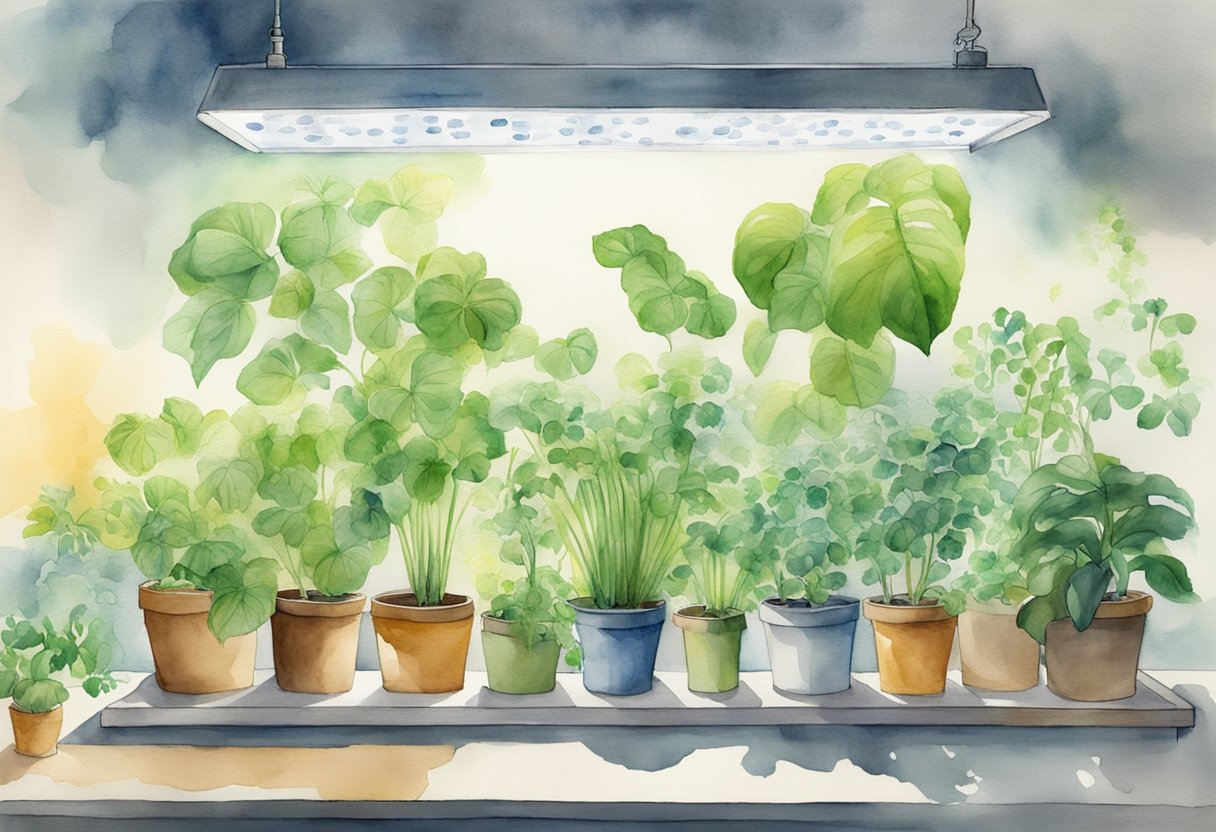
When starting with hydroponics, selecting the appropriate plants can significantly influence your success. Certain varieties thrive better in this method, often requiring less maintenance and yielding productive growth.
Best Plants for Hydroponic Beginners
Choosing suitable plants is crucial for hydroponic success.
Lettuce and spinach are popular choices for beginners owing to their ease of growth and rapid harvest cycles.
Leafy greens like these adapt well to hydroponic systems, making them ideal for novices.
Herbs such as basil, mint, and parsley are also excellent for hydroponic cultivation.
These plants thrive under controlled conditions and can be harvested continuously, offering both fresh flavors and satisfaction.
Additionally, tomatoes and peppers can be managed with basic care, providing both beginners and experienced growers a more challenging but rewarding experience.
Understanding Plant Nutrient Requirements
In hydroponics, providing the right nutrients is vital for healthy plant growth. Each plant has specific nutritional needs.
For instance, lettuce and spinach require nutrient solutions rich in nitrogen for leafy growth.
Tomatoes and peppers need additional potassium and phosphorus for fruit development, ensuring robust plants and good yields.
Using a well-balanced nutrient solution tailored to each plant’s needs will foster optimal growth and productivity.
Regular monitoring of pH levels and nutrient concentrations ensures that your plants remain healthy and vigorous, allowing you to adjust the solution as needed for the best results.
Setting Up Your Hydroponic Garden

Setting up a hydroponic garden involves choosing the right equipment and following a structured process to achieve optimal plant growth. It is crucial to select suitable components that will ensure a thriving garden.
Essential Equipment for Beginners
Starting your hydroponic garden requires specific tools to create the right environment for plant growth.
A nutrient reservoir is essential for storing the nutrient-rich water that feeds your plants. It’s important to keep it away from direct sunlight to prevent algae growth.
Grow lights are necessary for providing adequate light if natural sunlight is insufficient. LED lights are energy-efficient and widely used.
A growing medium replaces soil and helps support plant roots. Popular options include rock wool and clay pellets.
Additionally, a pH meter and nutrient solutions are vital to monitor and maintain the right nutrient levels and pH, ensuring your plants thrive in the hydroponic setting.
Step-by-Step Setup Process
Begin by choosing a suitable location. Ensure your setup has access to electricity and minimal temperature fluctuations.
Start assembling your system by placing the nutrient reservoir and arranging your chosen growing medium.
Incorporate a drip irrigation system to deliver nutrients efficiently to your plants. This ensures even distribution and reduces manual watering tasks.
Next, install your grow lights above the plants. Adjust the distance based on the intensity of light needed for your plant type.
Leafy greens like lettuce may need closer proximity compared to fruiting plants like tomatoes.
Regularly test the pH and nutrient levels using your tools. Add pH up or pH down solutions as needed to maintain an optimal range of 5.5 to 6.8 for most plant varieties.
Following these steps will set the foundation for a successful hydroponic garden.
Nutrient Solutions and Water Management
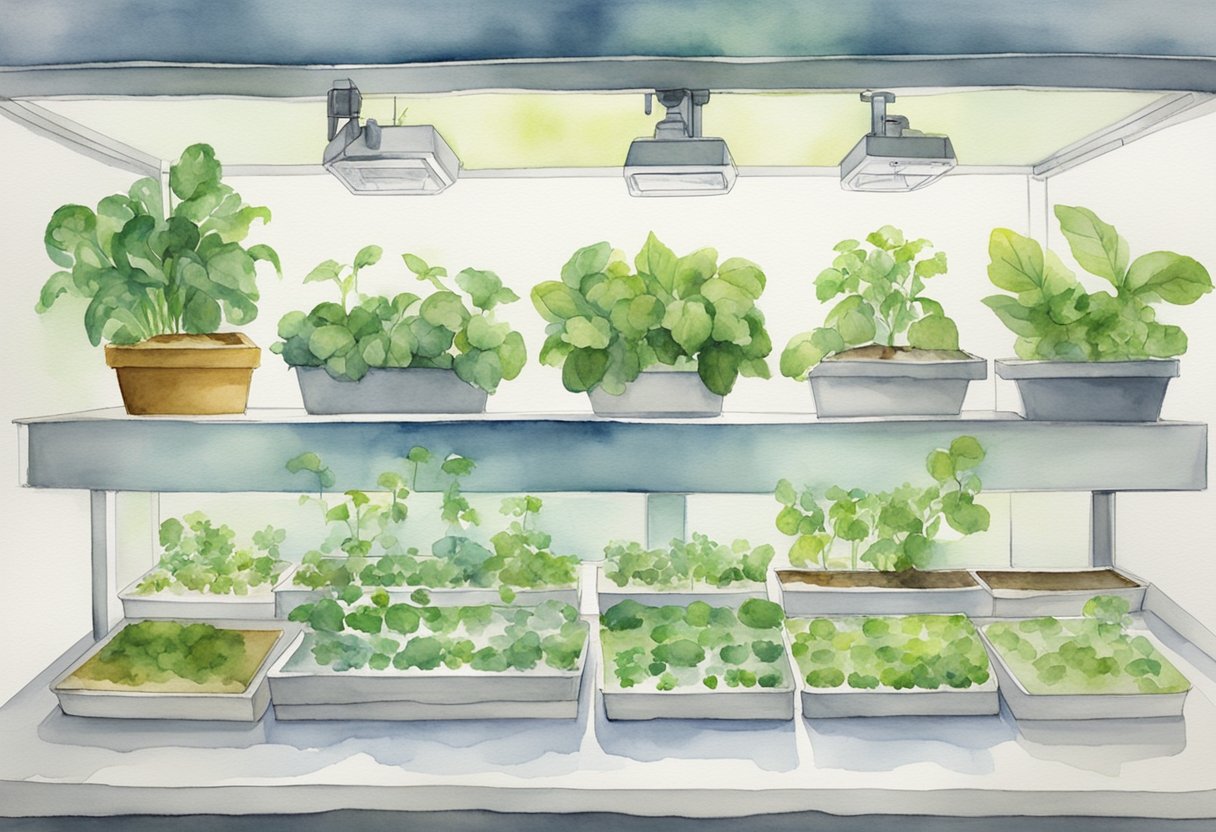
Managing nutrient solutions and water is crucial for successful hydroponics. You must focus on preparing a balanced nutrient mix and monitoring nutrient and water levels to ensure optimal plant growth.
Creating the Perfect Nutrient Mix
Crafting a nutrient-rich water solution is the foundation of effective hydroponics. Essential elements like nitrogen, phosphorus, and potassium should be carefully measured. Aim for accurate concentrations to meet plant needs.
To achieve this, consider using a pre-made nutrient mix for convenience.
Alternatively, customize your mix for specific plants. For example, adding 1-2 teaspoons of magnesium sulfate provides magnesium, while 1 teaspoon of calcium nitrate balances calcium levels.
Regularly assess pH levels between 5.5 and 6.5 to ensure nutrients are efficiently absorbed.
Maintaining Water and Nutrient Levels
Maintaining appropriate water and nutrient levels involves continuous monitoring and adjustments. Fluctuations in pH or nutrient concentration can affect plant health.
Use a reliable pH testing kit for easy and regular checks.
Hydroponic systems like Deep Water Culture (DWC) keep plants submerged in nutrient solutions, making monitoring easier.
Make sure to top up water levels often to compensate for evaporation and plant uptake.
By keeping these parameters stable, plants can thrive in the nutrient-rich environment.
Lighting and Environmental Control
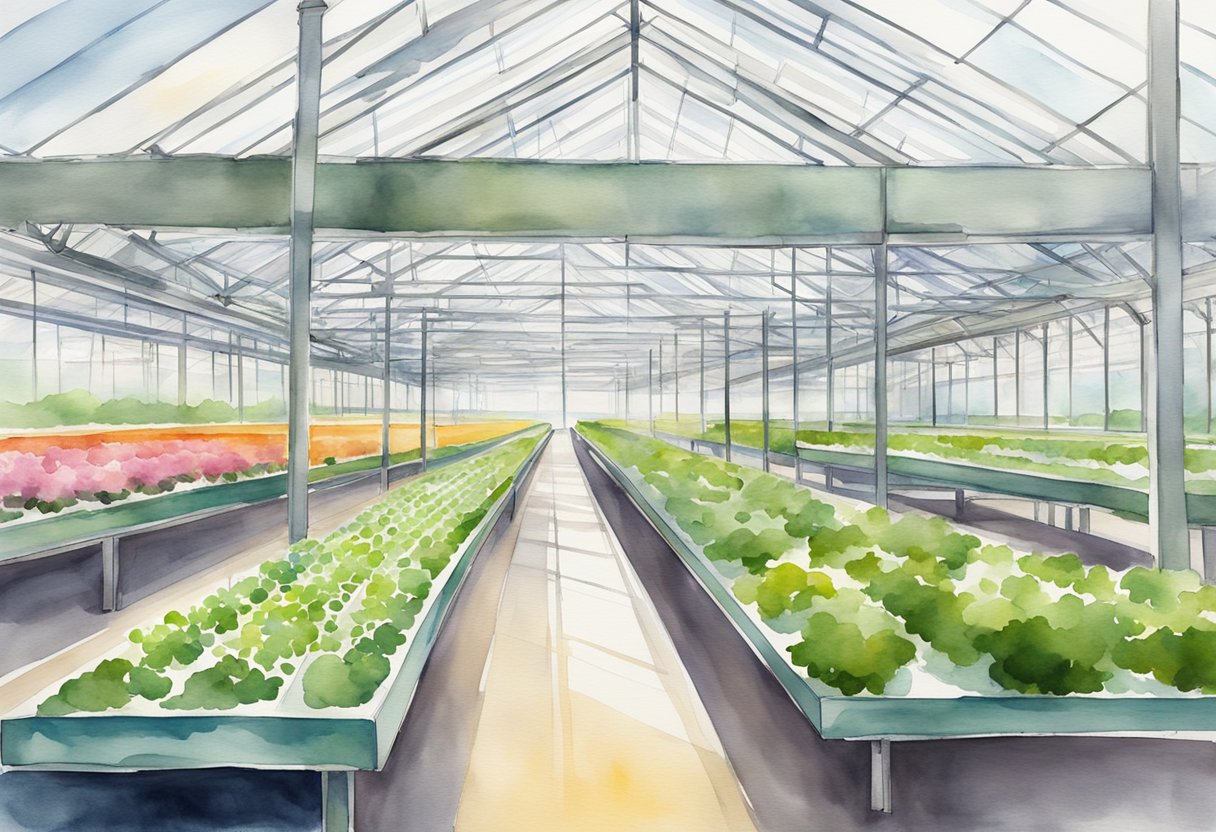
Lighting and environmental control are crucial for the success of your hydroponic setup. Selecting the right grow lights and maintaining optimal temperature and humidity levels can significantly impact your plants’ health and growth.
Choosing the Right Grow Lights
When selecting grow lights for your hydroponic system, consider factors such as light spectrum and intensity.
LED grow lights are popular due to their energy efficiency and full-spectrum capabilities. These lights provide the necessary wavelengths for different stages of plant growth, ensuring vigorous growth from seedling to bloom.
Fluorescent lights can also be effective for smaller-scale operations, particularly for seedlings and leafy greens. They are cost-effective and generate less heat, minimizing the risk of overheating your plants.
Intensity matters too, so consider the light’s positioning and adjustability.
Ensure that your setup allows you to position lights at the appropriate distance from plants, as this impacts photosynthesis rates and overall growth.
Refer to online resources like the LED Grow Light Guide for more detailed comparisons and recommendations.
Temperature and Humidity for Hydroponic Systems
Maintaining the right temperature and humidity levels in your hydroponic environment is vital.
Aim for a temperature range of 65-75°F (18-24°C) to foster optimal plant health. Temperatures outside this range can stress plants, affecting nutrient uptake and growth rates.
Humidity levels should generally be around 50-70%.
Use humidifiers and dehumidifiers as needed to maintain these levels, especially during different seasons.
Proper ventilation is also essential to regulate both temperature and humidity, preventing issues like mold growth.
Consistent monitoring with thermometers and hygrometers will keep you informed about your system’s environment, helping you to make precise adjustments to ensure a thriving indoor garden.
Tools like these are essential components of effective environmental control.
Monitoring and Maintenance
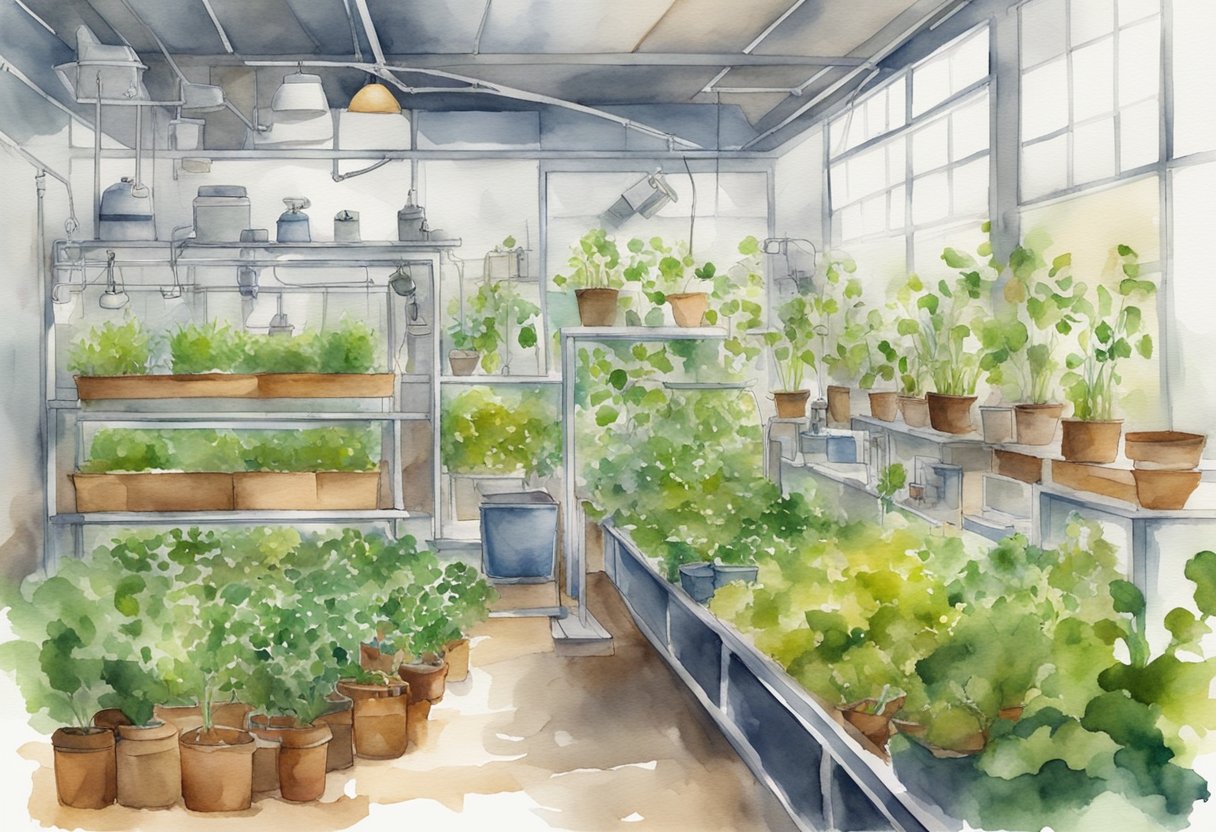
Proper monitoring and maintenance are crucial for a successful hydroponic system. Regular check-ups ensure plants remain healthy and vibrant. Additionally, a proactive approach helps in preventing and addressing nutrient deficiencies before they impact growth.
Regular Check-Ups for Plant Health
Conducting regular inspections is vital for maintaining plant health.
Check the pH levels of your water both daily and weekly, as they can significantly impact nutrient absorption.
An optimal pH range typically falls between 5.5 and 6.5, depending on the plants you are growing.
Regularly inspect the water pump to ensure it is functioning correctly. Any failures can disrupt nutrient delivery.
Clean the pump and filters to prevent blockages.
Examine the leaves and stems for any signs of disease or pest infestations.
Identifying and addressing issues early can prevent them from spreading to the rest of your hydroponic garden.
Preventing and Managing Nutrient Deficiencies
Nutrient deficiencies can hinder plant growth and affect yield. Ensuring a consistent supply of nutrients is critical.
Use a balanced nutrient solution, appropriate for the plants you are cultivating.
Monitor electrical conductivity (EC) to confirm the nutrient concentration is within the recommended range for your specific crops.
Look for symptoms such as yellowing leaves or stunted growth, which often indicate deficiencies.
Adjust nutrient solutions accordingly to address specific issues.
Utilizing a well-maintained water pump contributes to even nutrient distribution, helping prevent localized deficiencies.
Regular testing and adjusting keep your system optimized, fostering healthy plant growth and maximizing your hydroponic system’s potential.
Growing Mediums and Substrates
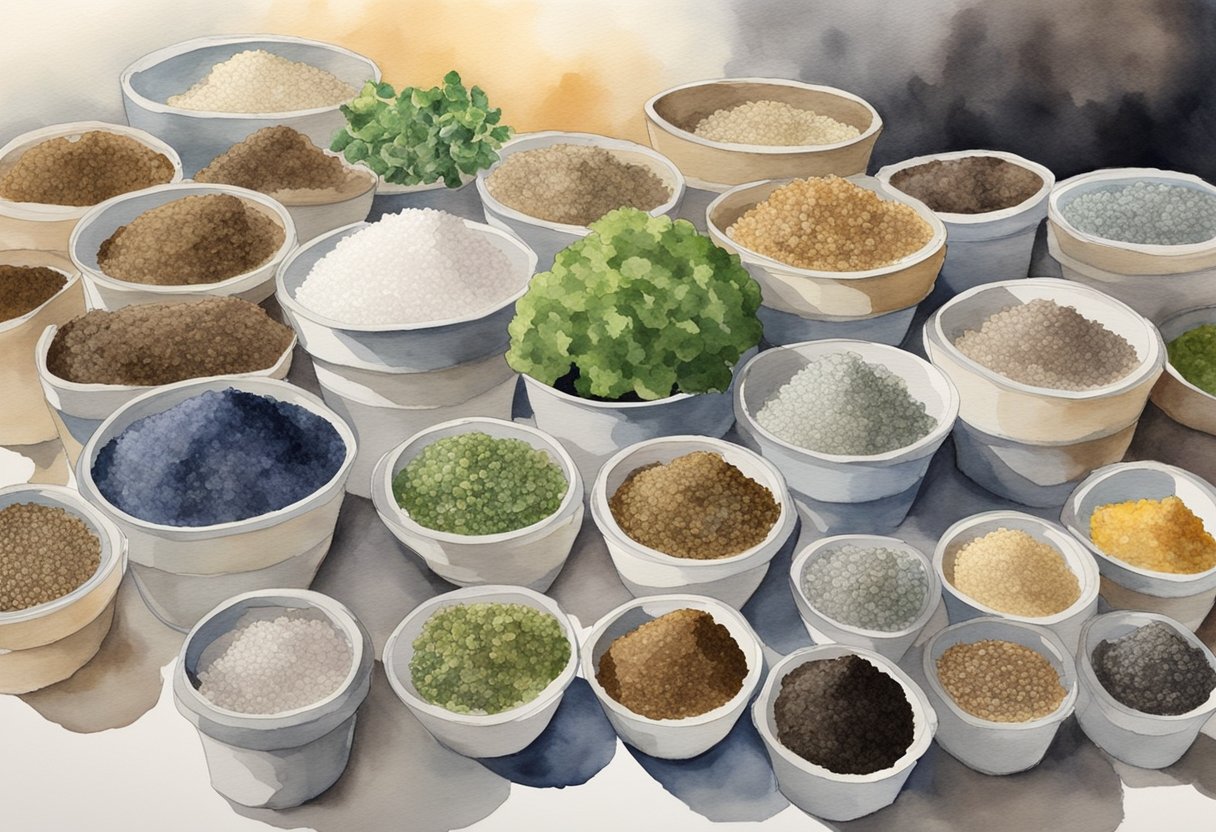
Choosing the right growing medium is essential for a successful hydroponic system. Each substrate has unique properties that can affect water retention, drainage, and plant support.
Comparing Different Types of Growing Mediums
Perlite is a lightweight, volcanic glass that improves drainage and aeration in your system. It’s commonly used in conjunction with other media for balance.
Clay pebbles (or hydroton) are popular for their excellent drainage and reusability. These round pellets are ideal for plants that require dry conditions between watering.
Coco coir, made from coconut husks, holds moisture well and provides excellent root support, making it suitable for a variety of hydroponic systems like deep water culture.
Rockwool is highly absorbent, retaining more water than many other substrates. It’s best used for starting seeds due to its moisture retention capabilities.
Pros and Cons of Popular Substrates
Perlite
Pros:
- Excellent drainage
- Lightweight and easy to handle
Cons:
- Can be washed away in some systems
- Dust can irritate skin
Clay Pebbles
Pros:
- Reusable and environmentally friendly
- Provides great drainage
Cons:
- Can be costly initially
- Requires rinsing before use
Coco Coir
Pros:
- Retains moisture well
- Sustainable and renewable
Cons:
- May contain salts that need rinsing
- Decomposes over time
Rockwool
Pros:
- Retains moisture
- Provides good root support
Cons:
- Not biodegradable
- Difficult to dispose of
Understanding these characteristics helps you select the best medium for your system, balancing water retention, air flow, and nutrient delivery.
Optimizing Hydroponic Growth
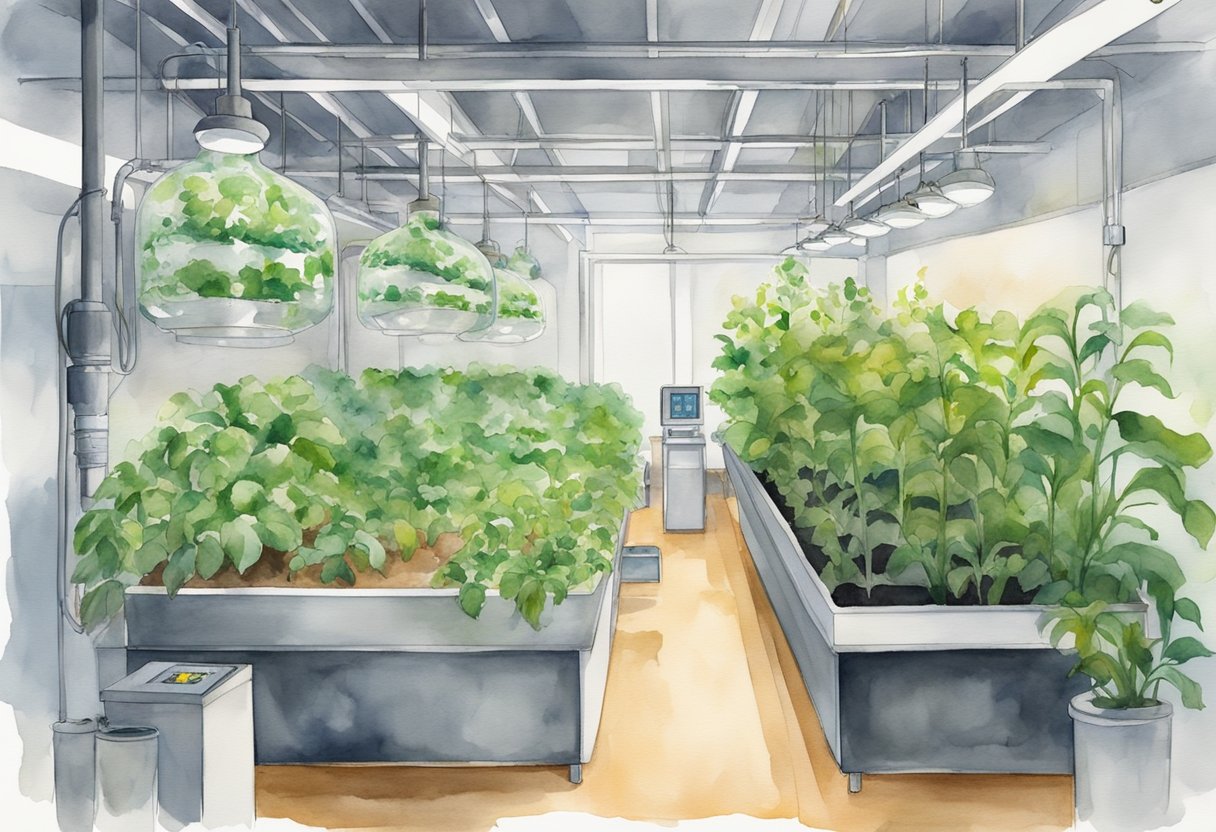
To achieve the best results in hydroponic gardening, focus on enhancing plant growth and maximizing yield. This involves using expert techniques to ensure your nutrient solutions and system designs are optimized for plant health and productivity.
Maximizing Yield with Expert Tips
A critical aspect of maximizing yield is selecting the appropriate hydroponic nutrients.
Balance macro and micronutrients based on the growth stage of your plants.
Adjust the pH levels of your nutrient solution to between 5.5 and 6.5 to ensure optimal nutrient uptake.
Maintain consistent environmental conditions where your hydroponic system is located.
Temperature, humidity, and light levels should be monitored and controlled.
Use an efficient grow light setup tailored to the specific needs of your crops, simulating the ideal day-night cycle.
Keep your grow tray and other equipment clean to prevent disease spread.
Regular flushing of your system with plain water can remove salt buildup from nutrients, maintaining the system’s efficiency.
Additionally, employing beneficial microorganisms can enhance nutrient absorption and root health.
Techniques for Enhanced Plant Growth
Optimize plant growth by choosing the right hydroponic system setup based on your goals and space.
Whether using NFT, DWC, or another method, ensure each plant has adequate space for its root system.
Air circulation is crucial, so using fans to move air around the plants can prevent stagnation and mildew.
Monitor water quality regularly.
Consider using reverse osmosis systems to reduce impurities in water.
It’s also vital to control the timing and frequency of irrigation. Over-watering or under-watering can stress plants.
Finally, consider training plants through pruning and trellising to encourage even growth and increase light exposure to all parts of the plant.
This helps in achieving a uniform and efficient photosynthesis process, leading to healthier plants with higher yields.
Advancing Your Hydroponic Hobby
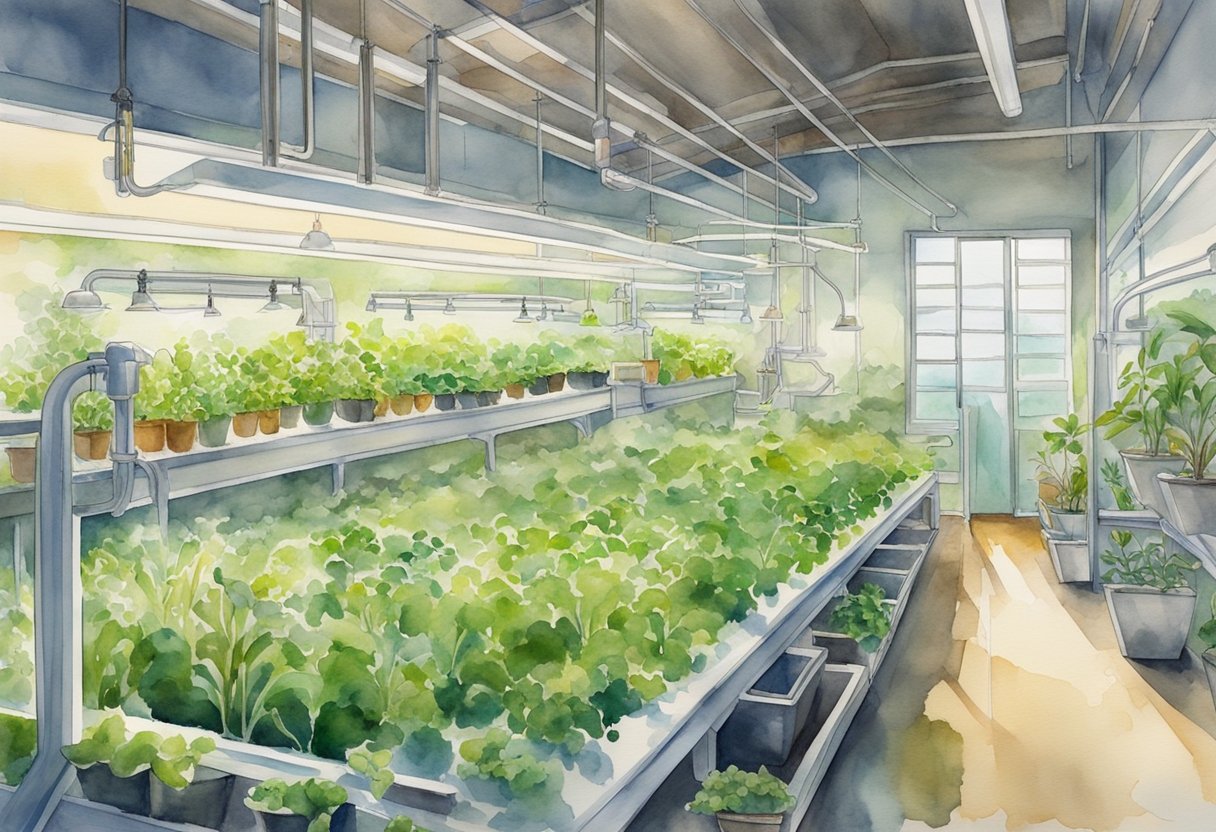
Embarking on your hydroponic hobby can be incredibly rewarding. By scaling your system and engaging with the community, you can optimize your garden and share tips with fellow enthusiasts.
Scaling Your Hydroponic System
To take your hydroponic hobby to the next level, consider expanding your setup for increased yield.
Start by evaluating available space. Whether you’re growing at home indoors or utilizing outdoor hydroponics, try to experiment with different types of hydroponic setups.
Try experimenting with different types of hydroponic setups, such as NFT or aeroponics, to see which best suits your plants’ needs.
Pay close attention to optimizing light and nutrient delivery, as these are crucial for plant health and growth.
Employ timers and automation tools to simplify maintenance and ensure consistency in care.
Leveraging technology in your garden can also enhance efficiency.
Automated systems can help maintain nutrient levels and adjust pH, while smart sensors provide real-time data monitoring.
This careful scaling and monitoring ensure each plant receives the ideal growing conditions it needs.
Joining the Hydroponic Community
Connecting with other hobbyists is a valuable way to exchange knowledge and experience.
Online forums, local clubs, and social media groups offer spaces to discuss growing techniques and troubleshoot issues in your hydroponic setups.
Consider participating in webinars or attending workshops to learn from experts.
Community engagement can offer insights into diverse growing methods, whether you’re focusing on indoor or outdoor hydroponics.
Collaboration often leads to discovering novel tips that improve your gardening skills and system productivity.
Sharing your experiences helps others and enhances your understanding of sustainable and innovative practices.
Building connections within the hydroponic community not only supports your journey but also fosters collective growth and learning, enriching the entire experience.
Frequently Asked Questions
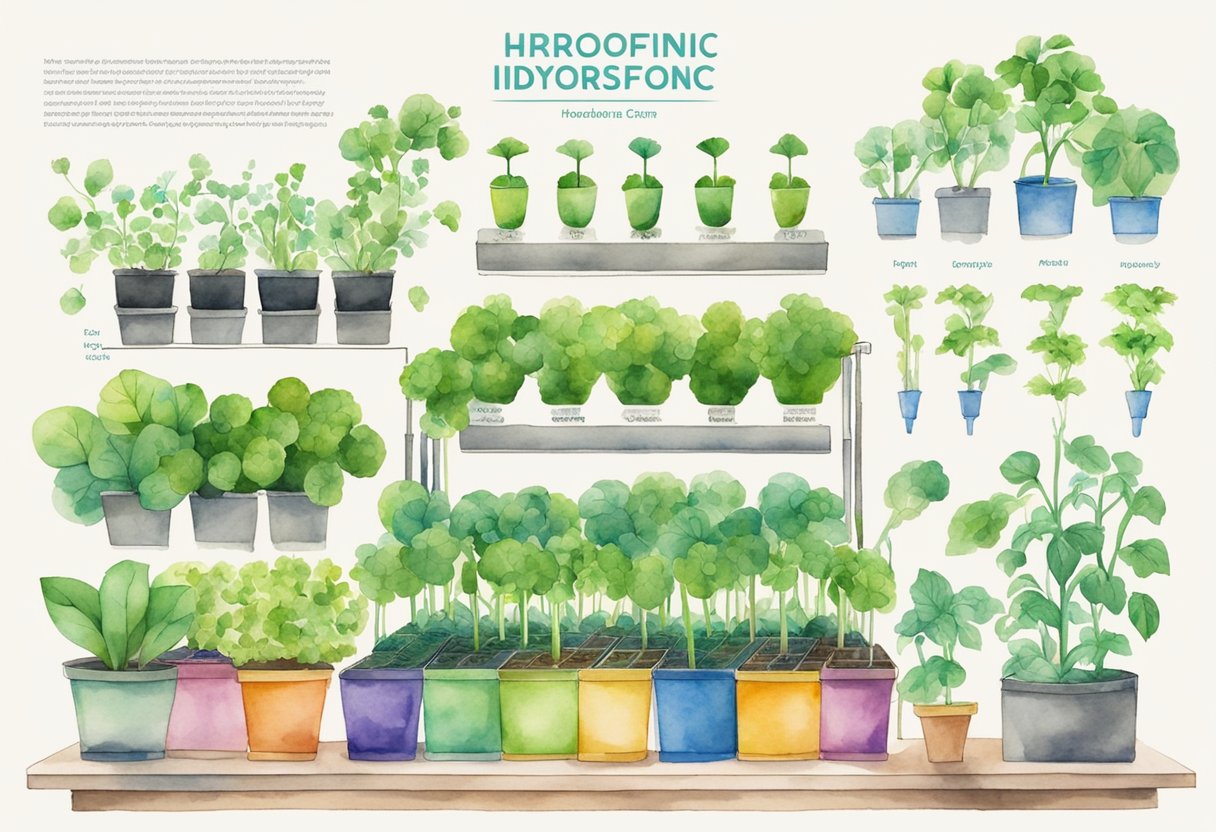
This section addresses common queries about starting with hydroponics. You’ll learn about essential equipment, system functions, plant choices, initial setup steps, and ongoing maintenance.
What supplies and equipment do I need to begin my first hydroponic garden?
To start, you need containers, a water reservoir, a pump, growing media, and a nutrient solution.
Some popular systems include Deep Water Culture and nutrient film technique. For beginners, the Kratky Method can be a good option, as it requires minimal equipment.
Can you explain how a basic hydroponic system functions?
A basic hydroponic system uses water and a nutrient solution to grow plants without soil.
Roots are typically suspended in a nutrient-rich water solution. Depending on the type, systems may recirculate the solution using a pump or rely on passive setups like the Kratky Method.
Light and air are critical to supporting healthy plant growth.
What are the benefits and drawbacks of choosing hydroponics as a method for gardening at home?
Hydroponics enables year-round indoor gardening and maximizes space.
Plants often grow faster and produce higher yields. However, power usage can be significant due to lighting and equipment, and initial setup costs may be higher compared to traditional gardening, according to The Ultimate Hydroponics for Beginners Guide.
What are some easy-to-grow plants for those new to hydroponics?
For beginners, consider growing lettuce, spinach, herbs like basil and mint, and other leafy greens.
These plants thrive in hydroponic environments and have relatively short growth cycles, making them ideal for those starting out. They require minimal nutrient adjustments and are forgiving of small mistakes as you learn.
What are the first steps in setting up a hydroponic garden for a novice?
Start by choosing a system that fits your space and budget.
Consider light requirements and ensure your chosen location supports your plants’ growth.
Purchase the necessary supplies, assemble the system, and fill it with a nutrient solution. Then, plant your seeds or seedlings, and begin by monitoring basic environmental conditions.
How do I maintain a hydroponic system and ensure the health of my plants?
Regularly check and adjust the nutrient solution’s pH and concentration. Clean equipment to prevent algae and pathogens.
Inspect plants for pests or disease symptoms. Maintain consistent lighting and proper air circulation.
With consistent maintenance, your plants can thrive and yield fantastic results in a hydroponic setup.

